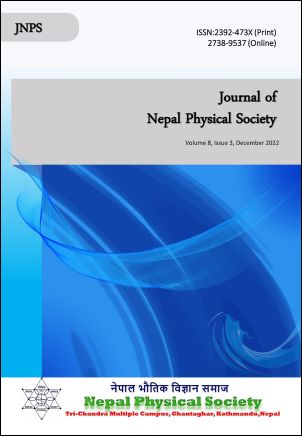Discharging Phenomena in different types of Lightning
DOI:
https://doi.org/10.3126/jnphyssoc.v8i3.50728Keywords:
Different types of lightning discharges, Thunderstorm lightning, Valcanic lightning, Nuclear lightning, Earthquake lightningAbstract
There are two charge regions and charges can transfer from one region to another region. For lightning discharging process, the centers of two charges are separated by different distances and air as an insulator between them. The methods of the process of charge formation in differ-ent types of lightning are different. In volcanic lightning, it form closer to the ground and dis-charging process occurs between the two charge regions as the normal thunderstorm lightning does. The steeped leader starts at the structure and propagates upward in nuclear lightning. Their direction of branching is also upward and the return strokes do not initiate from upward moving leaders. It is similar to upward initiated thunderstorm lightning flashes from tall struc-tures and forms in several kilometers. In Earthquake lightning, a shifting of the positive and negative charge centers in the material, which then results in an external electric field. Even the different lightning signatures have been observed in our scientific community, the thunderstorm lightning is frequently observed and measured by the different methods such as electric field measurement, magnetic field measurement, photography and so on. Here, the method of elec-tric field measurement is used to measure the thunderstorm lightning. In all cases of lightning, the discharge phenomena take place between two different charged regions. The two regions of positive charges and negative charges are separated by a certain distance and the air between them is an insulator. When the sufficient charges store in the two charge regions, voltage is de-veloped between them. If the potential developed is sufficient for the electric breakdown of the air, then lightning phenomena occur. Hence, the discharging phenomena occur between the positive and negative charge regions for the different types of lightning.
Downloads
Downloads
Published
How to Cite
Issue
Section
License
All right reserved. No part of this Journal may be reproduced in any form or by any electronic or mechanical means, including information storage and retrieval system, without permission in writing from the publisher, except by a reviewer who may quote brief passage in a review. The views and interpretation in this journal are those of author(s) and they are not attributable to the NPS.




